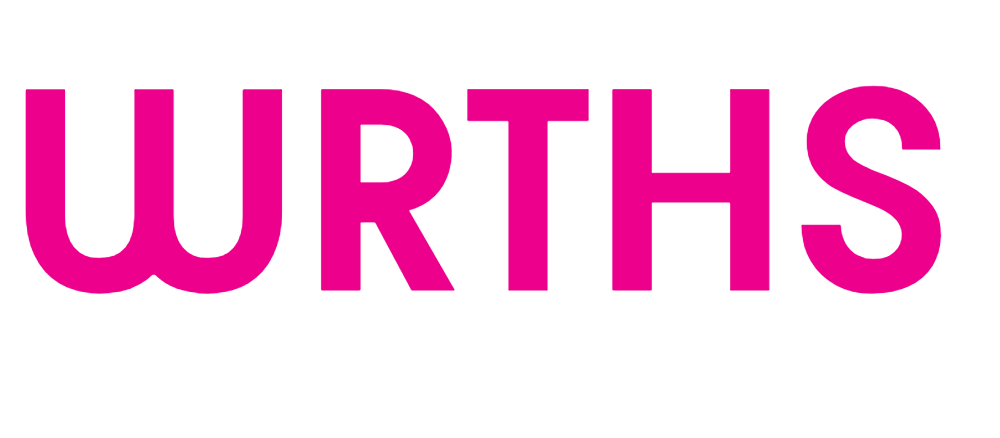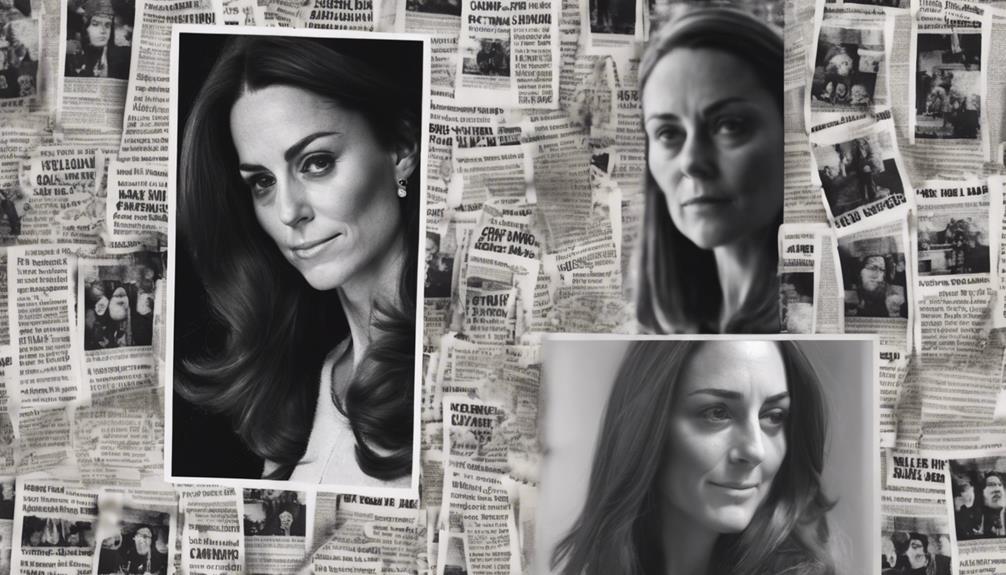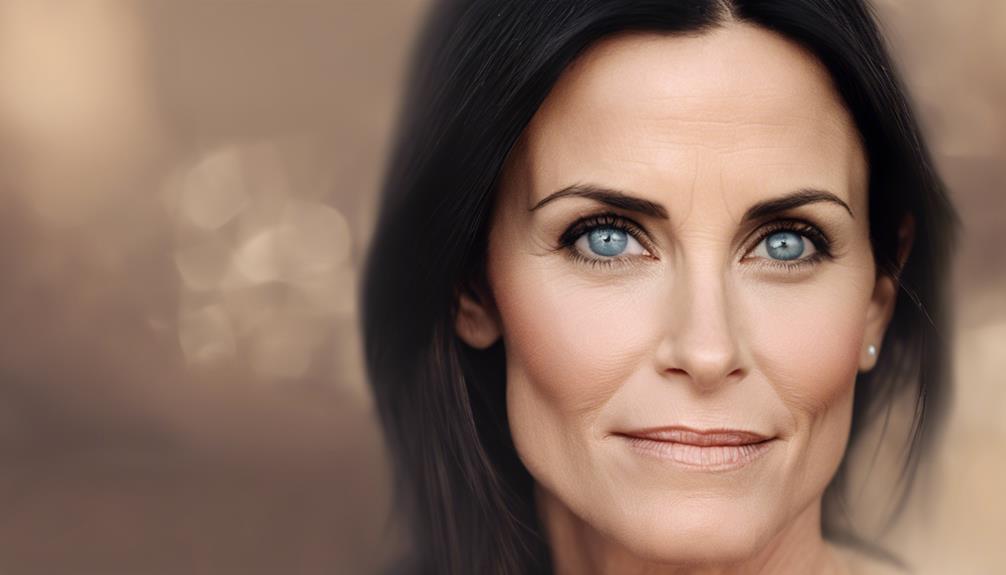A recent controversy surrounding a video of Kate Middleton's cancer diagnosis sparked concerns about authenticity and transparency in media reporting after Getty Images flagged the content due to questions about its source. The video, which was provided by a third-party organization, raised concerns about its significance, prompting Getty Images to append an editor's note, a standard practice for third-party content. The controversy highlighted the importance of verifying sources before reporting sensitive news and the delicate balance of handling celebrity news. As the situation unfolds, the role of photo agencies in disseminating information comes under scrutiny. Further investigation reveals the complexities of public announcements and the critical need for transparency.
Key Takeaways
• Getty Images flagged the Kate Middleton cancer diagnosis video due to concerns about its authenticity and adherence to their editorial policy.
• The video's legitimacy was questioned, despite clarification, and speculation about the source of the footage persisted.
• Verification of sources is crucial in reporting sensitive news to avoid speculation and ensure transparency in media reporting.
• The controversy highlighted the delicate balance required in reporting sensitive celebrity news and the importance of ensuring authenticity.
• The incident emphasized the role of third-party organizations in disseminating information and the need for transparency in handling sensitive content.
Understanding the Editor's Note
Getty Images' editor's note appended to Kate Middleton's cancer diagnosis video sparked concern among viewers, who questioned the authenticity of the content. The note mentioned that the video was provided by a third-party organization and may not adhere to Getty Images' editorial policy. This clarification led to skepticism among viewers, who wondered why Getty Images would flag its own content.
However, the agency clarified that adding such notes is a standard practice for content from third-party organizations. In this case, the video of Kate Middleton announcing her cancer diagnosis was recorded by BBC Studios at Windsor Castle. The presence of the editor's note serves as a disclaimer, indicating that Getty Images doesn't necessarily endorse the content's authenticity.
This controversy highlights the importance of transparency in media, as consumers increasingly demand trustworthy sources of information. Getty Images' decision to flag the video demonstrates a commitment to editorial integrity, even if it means raising eyebrows among viewers. By doing so, the agency upholds its reputation as a reliable source of visual content.
Getty Images' Standard Practice

As part of their editorial policy compliance, Getty Images appends disclaimers to all content sourced from external organizations. This standard practice sparked controversy in the case of Kate Middleton's cancer diagnosis video. The company's standard practice also includes adding an editor's note to content provided by third-party organizations to ensure transparency and context for viewers.
This practice isn't unique to the Kate Middleton video, but rather a routine procedure for content sourced from external organizations like Kensington Palace. The note is intended to provide context and transparency regarding the source of the footage.
Getty Images' standard practice encompasses:
- Appending disclaimers: Adding editor's notes to content sourced from external organizations.
- Ensuring transparency: Providing context and clarity on the source of the footage.
- Compliance with editorial policy: Adhering to internal guidelines for content sourcing and attribution.
- Maintaining editorial integrity: Upholding the highest standards of journalism and content creation.
The Authenticity of Kate's Diagnosis
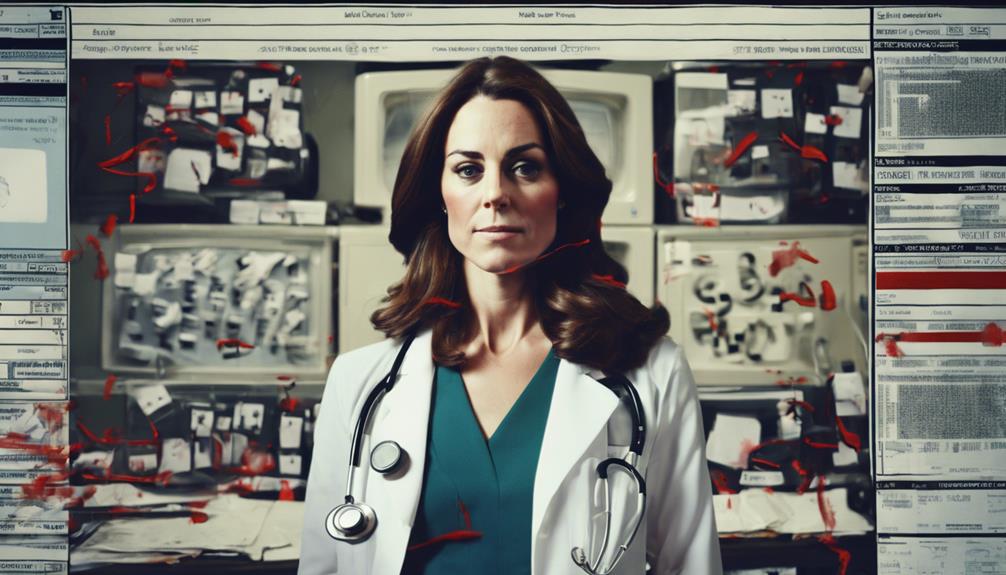
Questions surrounding the authenticity of Kate Middleton's cancer diagnosis video began to swirl after an editor's note was appended to the footage, sparking speculation about the legitimacy of the announcement.
The note, added by Getty Images, stated that the video was provided by a third-party organization and may not align with their editorial policy. This clarification sparked concerns among users, who questioned the decision to include the note with Kate Middleton's cancer announcement.
The presence of the editor's note led to speculation about the video's legitimacy, with some doubting the authenticity of Kate Middleton's cancer diagnosis. Getty Images clarified that adding an editor's note to third-party content is a standard practice for transparency, ensuring that users are aware of the source and potential biases of the content.
Despite this explanation, concerns about the video's legitimacy persisted, highlighting the importance of transparency in media reporting.
Handling Sensitive Celebrity News
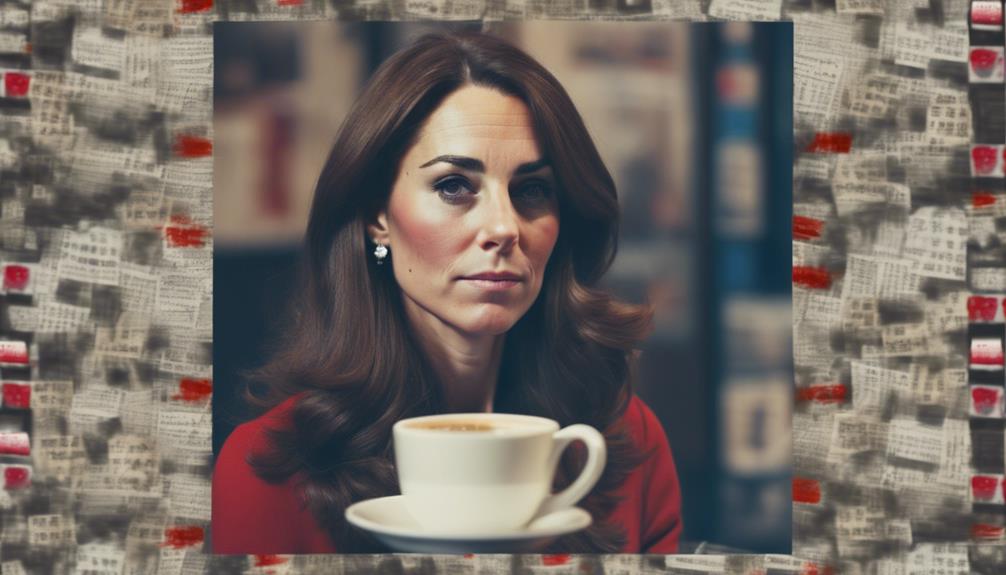
Handling sensitive celebrity news requires a delicate balance between reporting accurate information and respecting the individual's privacy, a challenge that becomes even more pronounced when dealing with high-stakes announcements like Kate Middleton's cancer diagnosis.
In the case of Kate Middleton's cancer diagnosis video, Getty Images flagged the content due to concerns about adherence to their editorial policy. The video, provided by a third-party organization, led to the addition of an editor's note, sparking speculation about the authenticity of the video. Getty Images clarified that the note was a standard procedure for third-party content and not a reflection of the video's credibility.
To navigate these complex situations, media outlets should:
- Verify the credibility of sources before reporting.
- Be transparent about the origin of third-party content.
- Avoid speculation and rely on factual information.
- Provide clear explanations for any editor's notes or clarifications.
The Complexity of Public Announcements
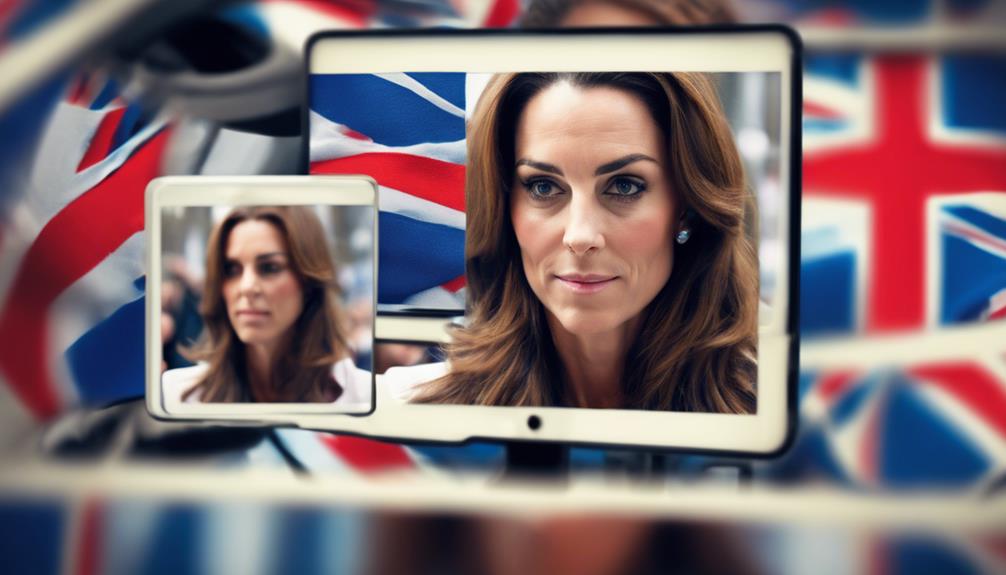
Public announcements, particularly those involving sensitive information, can have far-reaching consequences and require careful consideration to avoid unintended repercussions. The controversy surrounding Kate Middleton's cancer diagnosis video flagged by Getty Images highlights the complexity of public announcements.
When Getty Images flagged the video, they added an editor's note due to concerns about adherence to their editorial policy, as the video was provided by a third-party organization. This led some users to question the authenticity of the video. Getty Images clarified that adding such notes is a standard practice for third-party content.
The video, recorded by BBC Studios at Windsor Castle, sparked concerns about the handling of sensitive celebrity news. The incident underscores the importance of careful consideration in public announcements, especially when involving sensitive information like cancer diagnoses. It also raises questions about the role of third-party organizations in disseminating information and the steps taken to ensure authenticity.
The Role of Photo Agencies
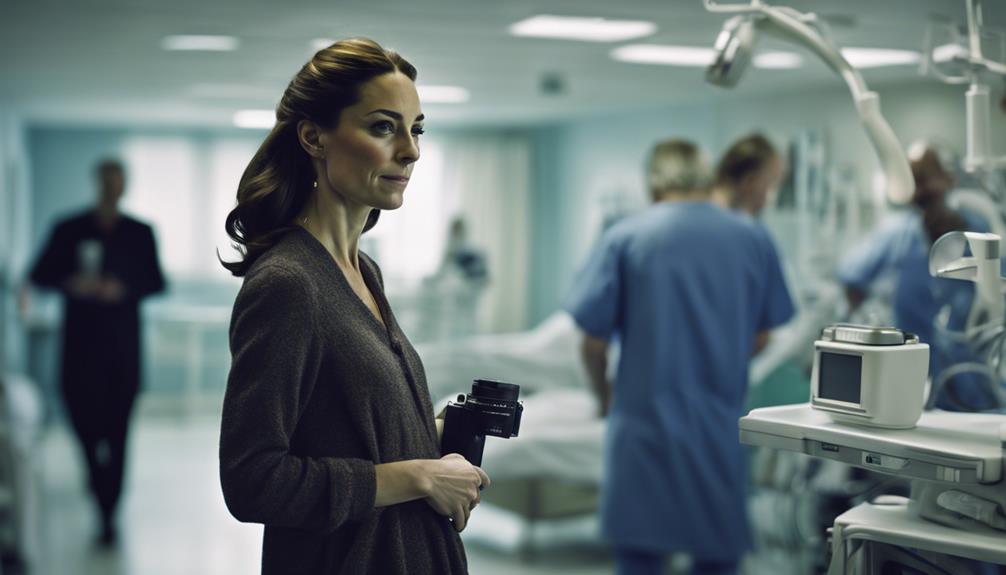
Photo agencies like Getty Images play a significant role in disseminating sensitive celebrity news, and their editorial policies can greatly impact the narrative surrounding high-profile announcements. In the case of Kate Middleton's cancer diagnosis video, Getty Images flagged the footage for potential editorial policy concerns. This decision was likely influenced by the video's origin from a third-party organization, BBC Studios.
Getty Images added an editor's note to the footage, clarifying that the video may not fully comply with their editorial standards. This note sparked speculation about the authenticity of the video.
Here are some key points to keep in mind:
- Getty Images' editorial policy concerns led to the flagging of the video.
- The editor's note was added to promote transparency about the video's origin and authenticity.
- The presence of the note raised questions about the video's credibility.
- Getty Images explained that adding such notes is a standard procedure for third-party content.
Clarifying the Controversy

As the controversy surrounding Kate Middleton's cancer diagnosis video continues to unfold, questions arise about privacy concerns and video footage ownership. The addition of an editor's note by Getty Images has sparked speculation about the authenticity of the video, leading to a closer examination of standard practices for third-party content.
Amidst the controversy, the royal family's recent image issues, including edited photos and public apologies, have come under scrutiny.
Privacy Concerns Raised
With the video's authenticity called into question, concerns about Kate Middleton's privacy began to swirl. The controversy surrounding the video flagged by Getty Images raised privacy concerns and speculation about the source of the footage. Getty Images' addition of an editor's note to the video sparked questions about compliance with their editorial policy.
This incident highlights the importance of transparency in media outlets. The following aspects of the controversy are vital in understanding the privacy concerns raised:
- Editorial policy compliance: Getty Images' flagging of the video due to concerns about compliance with their editorial policy sparked the controversy.
- Third-party organization involvement: The video was provided by a third-party organization, leading to the addition of an editor's note by Getty Images.
- Authenticity and transparency: Getty Images clarified that adding notes to third-party content is a standard practice for transparency, but this didn't alleviate concerns about the video's authenticity.
- Privacy and speculation: The controversy raised concerns about Kate Middleton's privacy and sparked speculation about the source of the footage.
Video Footage Ownership
Clarifying the controversy surrounding the video's authenticity, the ownership of the footage has come under scrutiny, revealing that BBC Studios holds the rights to the video of Kate Middleton's cancer diagnosis. This revelation has sparked questions about the role of third-party organizations in providing content to photo agencies.
Getty Images, the agency that distributed the video, added a standard editor's note, which stated that the footage was provided by a third-party organization and may not align with their editorial policy. This note sparked speculation about the authenticity of the video, with some users questioning its validity. However, the clarification emphasized that the note was a routine practice for content sourced from third-party organizations like Kensington Palace.
The controversy surrounding the video's authenticity has been largely fueled by misinterpretation of the editor's note, which was intended to provide transparency, not cast doubt on the video's legitimacy.
Frequently Asked Questions
What Was the Royal Announcement on Kate?
The royal announcement on Kate Middleton revealed that she'd undergone major abdominal surgery in London, initially believed to be non-cancerous.
However, post-surgery tests confirmed she had cancer, leading to preventative chemotherapy.
Kate expressed shock about the diagnosis's impact on her family and shared her emotional journey through a video statement filmed at Windsor Castle.
What Kind of Surgery Did the Princess Have on Reddit?
Kate Middleton underwent significant abdominal surgery in London prior to her cancer diagnosis. This surgery, initially thought to be non-cancerous, led to the discovery of cancer through post-operation tests. The procedure prompted her to start preventative chemotherapy.
Although the exact nature of the surgery remains undisclosed, it's evident that it played a vital role in diagnosing and treating her cancer.
Is Kate Middleton a Princess?
In medieval parlance, a princess was typically a daughter of a king or queen, yet Kate Middleton's royal designation is more nuanced. She's formally known as the Duchess of Cambridge, a title bestowed upon her marriage to Prince William.
While the media and public often refer to her as 'Princess Kate,' her official title is Duchess, a distinction rooted in British royal tradition, where birthright and marriage dictate title and protocol.
How Old Is Catherine of Wales?
Catherine of Wales, also known as Kate Middleton, was born on January 9, 1982. As of 2022, she's 40 years old.
Born in 1982, Kate Middleton has been a prominent figure in British royalty since her marriage to Prince William in 2011. Her title, Catherine, Duchess of Cambridge, reflects her esteemed position within the royal family.
Conclusion
To sum up, it's worth mentioning that the controversy surrounding Kate Middleton's cancer diagnosis video highlights the complexities of handling sensitive celebrity news.
Getty Images' standard practice of flagging sensitive content sparks debate on the role of photo agencies in reporting celebrity health issues.
Importantly, according to the American Cancer Society, one in eight women will develop invasive breast cancer in their lifetime, underscoring the importance of responsible reporting on health matters.
Ultimately, the incident underscores the need for transparency and sensitivity in reporting on celebrity health issues.
